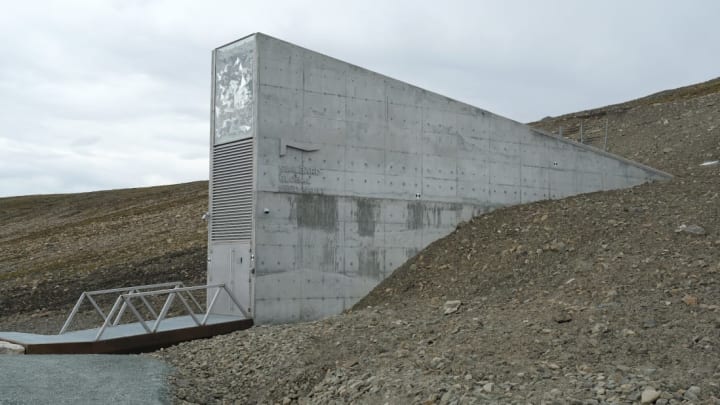In an ideal world, the Svalbard Global Seed Bank in Norway rarely has to open its doors. The so-called "doomsday vault" contains 1.1 million seed samples from roughly 6000 plant species that serve as insurance against natural and human-made disasters. As Reuters reports, the Arctic fortress has been unlocked for the first time in 2022—this time to make deposits instead of withdrawals.
On Monday, February 14, Germany, Sudan, Uganda, New Zealand, and Lebanon sent samples of important crops to the bank on the Norwegian island of Spitsbergen. The Lebanese contribution comes from the International Center for Agricultural Research in Dry Areas, or ICARDA. In 2015, ICARDA become the first group to withdraw material from the bank to replenish seeds destroyed in the Syrian War. The organization has since relocated from Aleppo to Beirut and rebuilt its seed stores. Its collections at home have become robust enough for ICARDA to deposit around 8000 samples in the global seed vault this week.
The Svalbard Global Seed Bank began operating in 2008 as a physical backup drive for the world's crops. The 11,000-square-foot facility is built into the side of an Arctic mountain, the hope being that its remote location in the frozen tundra will spare it from wars and rising temperatures threatening plants elsewhere on the planet.
But as we've seen in recent years, the global seed bank isn't entirely impervious. Melting permafrost flooded the vault in 2017, and in 2020, the Svalbard archipelago where it's located hit a record high of 71°F. Fortunately, no seed samples were damaged in either event, and the facility has many safeguards in place to protect its precious contents from catastrophe.
After adding more seeds to its catalog, the seed vault will seal its doors again on February 18. There are plans to open it twice more for deposits this year: once from June 6 to June 10 and again from October 24 to October 27.
[h/t Reuters]
